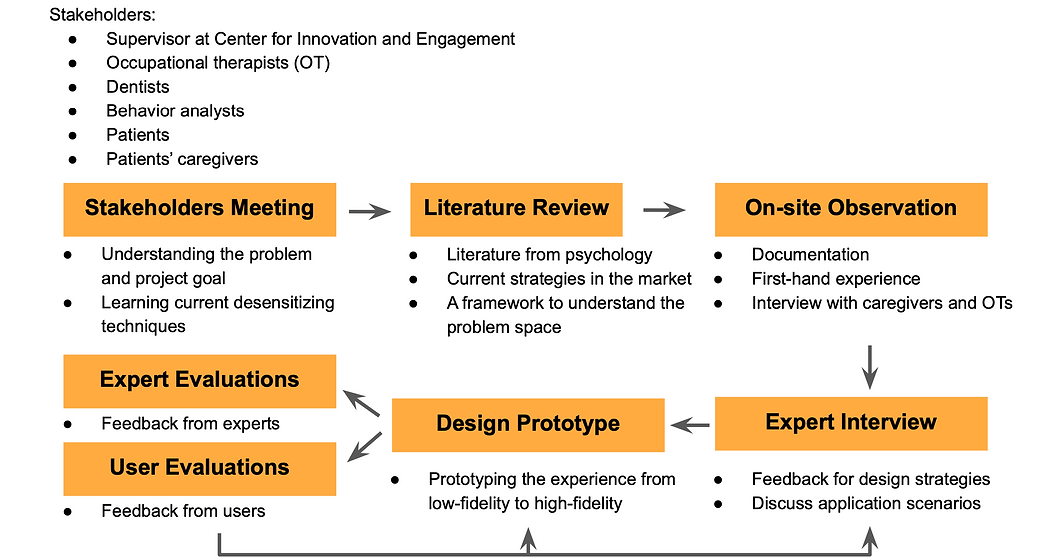Sarena Guo, Zhiwen Qiu
Individuals with autism frequently found dental appointments difficult as the experience cannot satisfy their sensory needs. We identified significant challenges faced during dental care visits, including difficulties in navigating hospital corridors, heightened anxiety while seated in dental chairs, and apprehension towards dental instruments. A common issue among many participants was sensory processing disorder (SPD), manifesting as either an increased sensitivity to environmental stimuli like sound and light, or a decreased sensitivity necessitating constant sensory input. To address these challenges, we developed innovative interfaces with an intelligent sensory slider. This tool allows for the adjustment of AR animations within hospital corridors and on dental chairs, aiding in emotional regulation. We also integrated a real-time gesture feedback system, enhancing the dental care experience through customization to meet diverse sensory needs. This approach aims to make dental visits more accommodating and less stressful for individuals with autism, ultimately fostering a more inclusive healthcare environment.
Problem
In an extensive user study engaging various stakeholders ranging from healthcare professionals to patients, it was found that individuals with autism often face challenges in dental care environments. Key difficulties include navigating through narrow and bright hospital corridors, experiencing heightened anxiety while seated in dental chairs, and a deep-seated fear of dental instruments. People have confronted with sensory processing disorder (SPD), a condition characterized by a polarized sensitivity to sensory stimuli. This includes an heightened sensitivity to environmental factors such as sound and light for some, while others display a reduced sensitivity, needing constant sensory feedback. These findings underscore the need for personalized interventions in dental care settings for those with autism.

Figure 1. User-centered Design Approach with Different Stakeholders.


.jpg)
S1. Narrow & bright hospital environment
S2. Anxiety sitting on the dental chair
S3. Fear of dental tools
Figure 2. Challenges of Dental Appointment for Individuals with Autism.
Prototype Design
In response to the challenges, our team has developed state-of-the-art AR-assisted interfaces featuring an intelligent sensory slider. This innovative tool enables the adjustment of AR animations in both hospital corridors and on dental chairs. These animations play a crucial role in managing and regulating the emotional responses of individuals with autism. In addition, we have integrated a sophisticated real-time gesture feedback system. This system personalizes the dental care experience, catering specifically to the diverse and unique sensory needs of each individual. By implementing these technological solutions, our aim is to significantly enhance the comfort level of dental visits for individuals with autism. This approach not only makes dental care more accessible and less intimidating but also promotes a more inclusive and understanding healthcare environment. Our solutions are designed to bridge the gap between medical necessity and patient comfort, ensuring that dental care is a more positive and less stressful experience for those with sensory sensitivities.